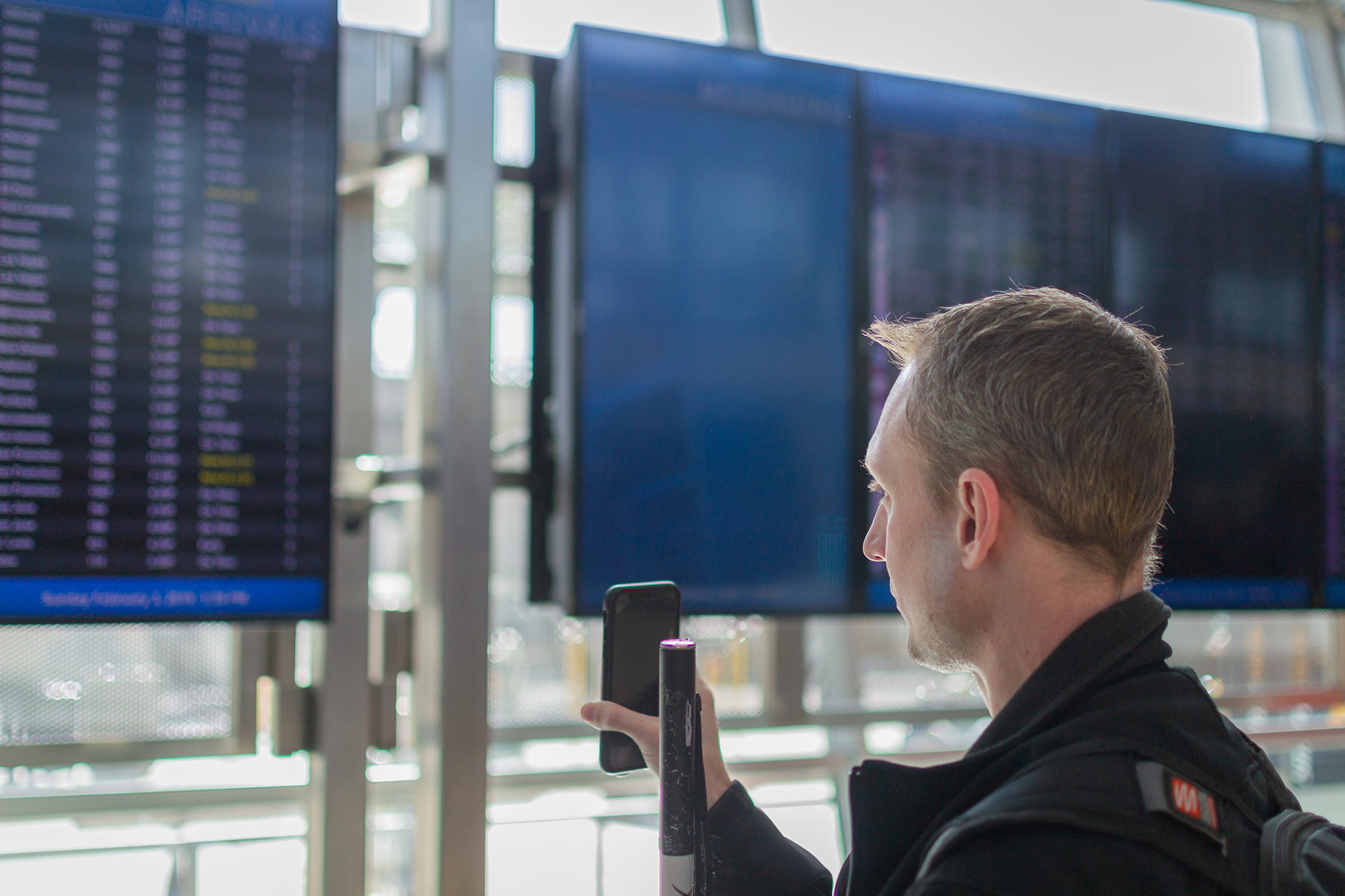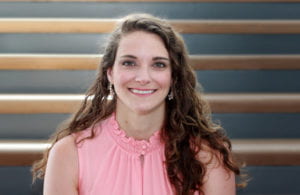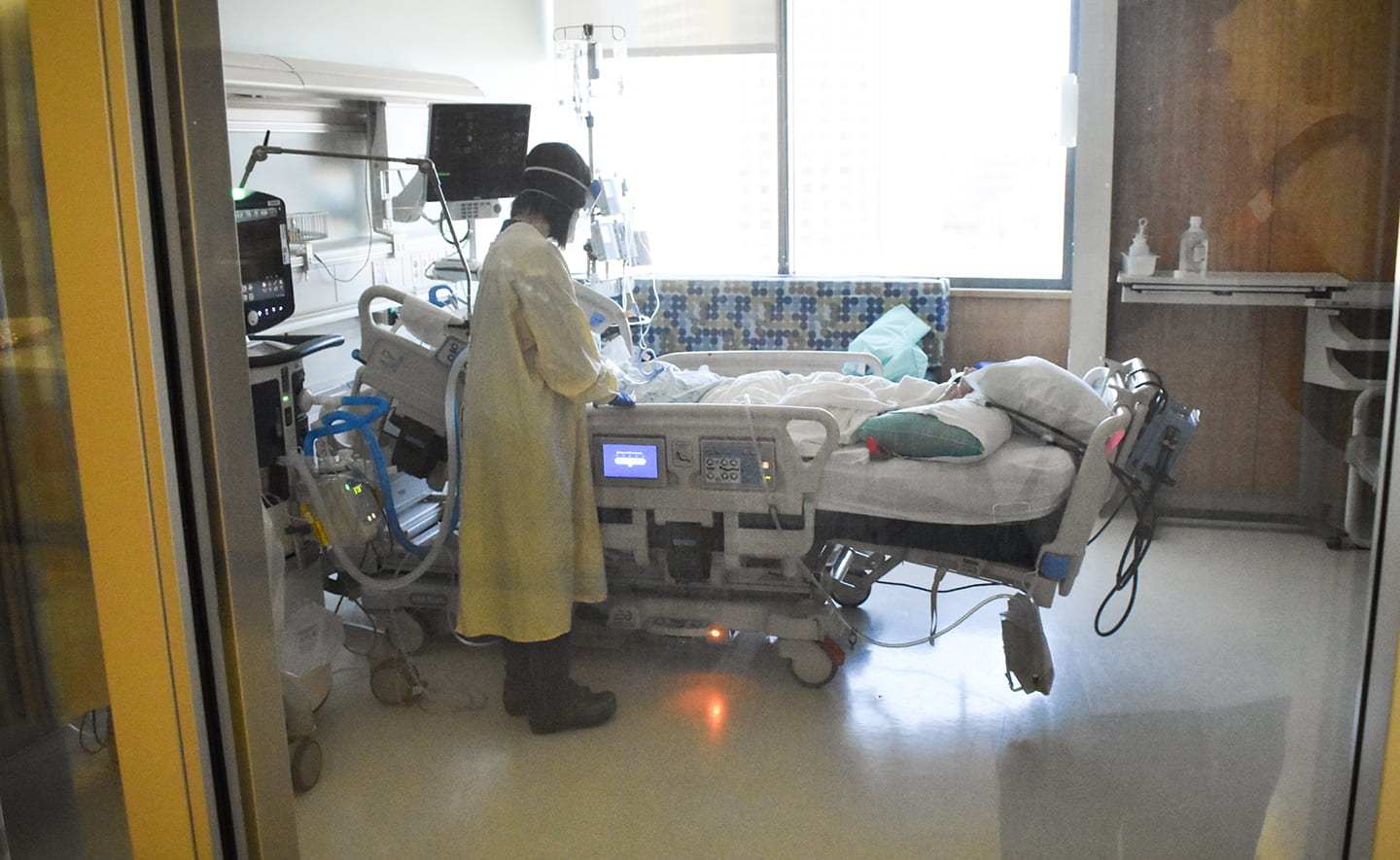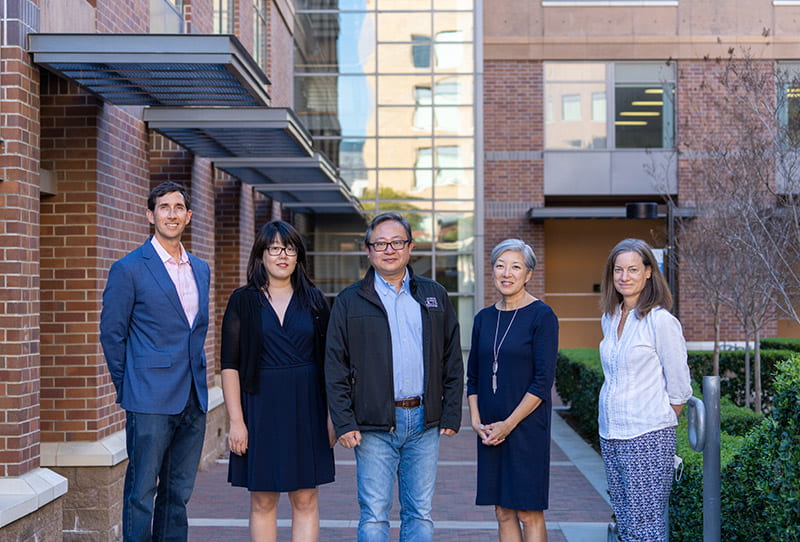Tech for people with visual disabilities
UCI researchers collaborate with Toyota to provide Aira, a visual interpreter service, to the local community during the pandemic

The pandemic has brought about a host of challenges, with social distancing presenting difficulties for everyone – especially for those with a visual disability. How do you know your proximity to people if you can’t see them? How do you get assistance from others while remaining six feet apart? These are questions Stacy Branham, a UCI assistant professor of informatics, decided to address together with Toyota Motor North America.
“People with visual disabilities often need sighted assistance in the grocery store, but that doesn’t work with social distancing,” Branham says, noting that food insecurity was just one of many concerns highlighted in a survey of adults who are blind or have low vision. “Some people who are blind normally order groceries online, but these services quickly became completely backed up with increased demand by the general population.”
A focus of Branham’s research in UCI’s Donald Bren School of Information & Computer Sciences is accessible computing, and now, with funding from Toyota, she is leading an effort to better support people with visual disabilities during the pandemic.
A pivot in research
Prior to the pandemic, Toyota was engaged with UCI and the University of Maryland, Baltimore County on a project to develop technologies to support individuals with disabilities. “We’ve been working together to find ways to help improve accessibility,” says Mike Goss, general manager, Toyota Social Innovation. “With the pandemic, and like most projects, we wanted to find a way to pivot to address immediate needs and improve access.”
Branham started reaching out to the project’s advisory board members for potential ideas. When she spoke with UMBC graduate research assistant Ali Abdolrahmani, who has a visual disability and is actively involved in the Toyota mobility project, he told her about Aira, a visual interpreter service that lets users call a sighted remote assistant.
Access to Aira
Aira is a smartphone app that connects people who are blind and low-vision to highly trained, remotely located agents who can provide immediate visual assistance. Abdolrahmani has used the service for a variety of reasons, from locating a building number and doorbell to finding a dropped AirPod to changing the temperature on his home’s digital thermostat. “The very good thing about Aira is, because the agents are trained, they know how to communicate with blind and visually impaired people,” he says.
However, because Aira requires a smartphone and good connectivity, it’s not universally accessible. While the service is free in five-minute increments, a paid subscription is often needed for longer, continued use. These obstacles are increasingly problematic as demand for the service is growing at a time when more and more people are experiencing economic hardship. “People with visual disabilities are unemployed and underemployed at much higher rates than the sighted population, and I’m sure during a pandemic this is only exacerbated,” says Branham.
So, after talking with Abdolrahmani, she started work to increase access to Aira. With Toyota funds, UCI purchased 600 unlimited Aira accounts for one year and secured iPhones to include with the subscription if needed. In addition, Aira donated 100 Samsung J8 phones to support Black people with visual disabilities.
“Since the pandemic started, Aira usage has increased for a range of activities, including social distancing, assistance in setting up home electronics, and various activities that can benefit from a visual interpreter,” says Troy Otillio, CEO of Aira. “This project aligns closely with Aira’s mission to make the world more accessible for the blind and low-vision community.”
Aira’s demo video shows social distancing with a visual interpreter.
Abdolrahmani is excited to gain unlimited access to the service through the project, but he’s even more excited to provide Aira to those who wouldn’t otherwise have access. “We have this opportunity to provide equal access to services for underprivileged, minority groups of people in society … which aligns with the main mission of our research team.”
A new partnership
A collaboration was formed with a local independent living center, the Dayle McIntosh Center, to integrate Aira in the community.

DMC is now offering a free Aira subscription to its members as well as a free smartphone for those in need. Branham’s team is offering tech support for setting up the phones and service and will conduct surveys to assess Aira’s impact during the pandemic.
“People with visual disabilities should be able to decide for themselves whether or not Aira helps,” says Branham. “They should be able to have access that’s not prohibited by their lack of money or access to technology.” This project removes financial and technological barriers and, by surveying users, aims to quantify the impact.
“I’m so thankful to Toyota and UCI for partnering with us on this project,” says Larry Wanger, director of DMC, who has been using Aira since 2017. His first experience with the service was at an airport, where he used it to find his gate. “It was pretty amazing,” he says, recalling the independence he felt in not needing to ask anyone at the airport for assistance. “It truly impacts people’s lives.”
Wanger hopes that the data collected will give DMC the evidence it needs to push for additional funding to close the technology gap and improve the daily lives of an underserved subcommunity within the visual disabilities community. “I hope this project helps demonstrate to local county officials that offering Aira is extremely helpful by showcasing the various needs and uses,” says Wanger.
Campus support
Branham also reached out to UCI’s Office of Equal Opportunity and Diversity (OEOD) to ask about offering Aira to students and faculty with visual disabilities. Andrew Berk, the ADA coordinator at OEOD, was thrilled to help facilitate this effort.
“I am excited about Aira because it keeps UCI on the cutting edge of assistive technology,” says Berk. “Providing this service goes beyond complying with laws like the Americans with Disabilities Act. Aira gives these individuals tools that they need to succeed in academics, student life, and independent living.”
Berk put Branham in contact with Karen Andrews, the director of UCI’s Disability Services Center, and the two are now working to make the service available on a trial basis. Branham’s team will also assess campus use of the service as part of the data collection for the project.
“Those who have visual disabilities — students, faculty and staff — now have a tool to fully integrate into campus and college life,” says Andrews. “Aira will increase a sense of independence and mobility for users while promoting a culture of inclusivity at UCI and in the community.”
Since the Aira sign-up was launched on Sept. 30, 2020, the team has already honored nearly 300 requests for the service. Branham’s team is now working to disseminate smartphones and provide tech support to those who require new devices to activate Aira.
“One of my personal goals here is to develop strong ties with the community, whether that be here at UCI or out in Orange County,” says Branham, “so that we can work together to bring about the sort of technological innovations that people with disabilities are calling for.”



